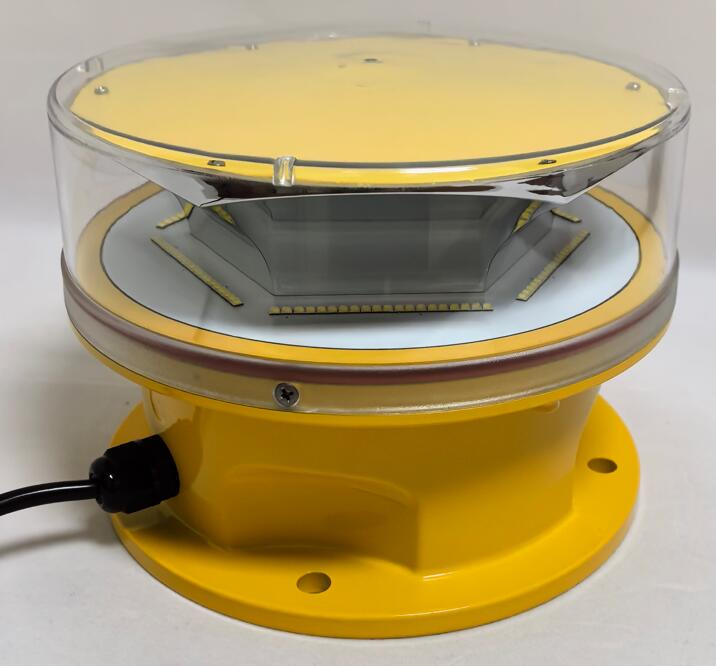Aircraft Obstruction Warning Lights: Safeguarding the Third Dimension
In the intricate tapestry of aviation safety systems, aircraft obstruction warning lights stand as critical visual sentinels that protect both airborne vehicles and terrestrial structures from catastrophic collisions. These specialized lighting systems form an essential layer of protection in increasingly crowded airspace, serving as constant visual reminders of potential hazards while enabling safe navigation through complex urban and natural environments. The technological sophistication embedded in modern aircraft obstruction warning lights represents a remarkable convergence of optical engineering, materials science, and aviation safety protocols.
The classification system for aircraft obstruction warning lights follows internationally recognized standards based on structure height, location relative to flight paths, and specific risk assessment. Low-intensity systems provide basic marking for structures under 150 feet, while medium-intensity configurations employ flashing red beacons for taller obstructions. High-intensity white strobe systems deliver maximum visibility for the most significant hazards, particularly those near airports or in critical approach corridors. This multi-tiered approach ensures appropriate warning levels while optimizing energy efficiency and minimizing environmental impact.

Engineering excellence in aircraft obstruction warning lights addresses extraordinary technical challenges that extend far beyond simple illumination. These systems must maintain precise photometric performance while enduring extreme environmental conditions including hurricane-force winds, ice accumulation, temperature extremes ranging from -40°C to +70°C, and constant structural vibration. Housing designs utilize advanced materials such as marine-grade aluminum alloys with multi-stage protective coatings that resist corrosion from industrial atmospheres and coastal salt spray. Hermetic sealing technologies protect internal electronics from moisture intrusion while managing thermal dynamics under varying operational conditions.
| aircraft obstruction warning lights |
Optical system design represents a particularly advanced aspect of aircraft obstruction warning light technology. Contemporary fixtures employ precision-engineered lenses with computer-optimized prism patterns that control light distribution to maximize visibility for approaching aircraft while minimizing ground-level light pollution. The adoption of LED technology has revolutionized these systems through enhanced reliability, reduced power consumption, and improved control over spectral characteristics. The specific red and white color requirements are maintained within strict chromaticity coordinates defined by aviation authorities to ensure consistent recognition by pilots across different regions and aircraft types.
Installation planning for aircraft obstruction warning lights involves meticulous engineering analysis to ensure optimal visibility from all approach angles. Lighting placement must consider the structure's geometric configuration, surrounding topography, and typical aircraft approach patterns. Engineers utilize advanced simulation software to model light distribution patterns and verify compliance with aviation regulations before installation. Mounting systems must accommodate structural movement while maintaining precise alignment of light fixtures under all weather conditions, requiring specialized brackets and vibration-dampening components.
Control and monitoring systems for aircraft obstruction warning lights have evolved into intelligent networks that ensure continuous operation and facilitate maintenance. Modern systems incorporate photoelectric sensors that automatically activate lights at dusk and deactivate at dawn, with manual override capabilities for testing and maintenance. Advanced monitoring systems provide remote status alerts for lamp failures, power disruptions, or system malfunctions, enabling prompt maintenance response. These capabilities are particularly valuable for structures in remote locations or difficult-to-access environments where regular physical inspection is challenging.
Regulatory compliance forms the foundation for all aircraft obstruction warning light applications. Aviation authorities including the FAA, EASA, and ICAO establish detailed specifications for light intensity, flash characteristics, color values, and system reliability. These regulations are continuously updated based on operational experience and technological advancements. Compliance verification involves rigorous testing by certified laboratories and ongoing maintenance of detailed performance records throughout the system's operational life. Documentation requirements include regular photometric testing and maintenance logs that support comprehensive safety management systems.
Environmental considerations have significantly influenced aircraft obstruction warning light design in recent years. Manufacturers have developed advanced shielding systems that minimize light pollution affecting astronomical observations and wildlife behavior. The transition to LED technology has reduced energy consumption by up to 80% compared to traditional lighting systems, while smart control systems further optimize power usage based on actual visibility conditions. These environmental improvements have facilitated installations in ecologically sensitive areas while maintaining the highest aviation safety standards.
Future developments in aircraft obstruction warning light technology focus on enhanced integration with other aviation safety systems and improved operational efficiency. Research continues into adaptive systems that can automatically adjust intensity based on real-time visibility conditions or aircraft proximity. The integration of obstruction lighting with unmanned aircraft system traffic management presents new opportunities for dynamic lighting control that responds to specific operational needs. Advancements in materials science may yield more efficient thermal management systems and improved corrosion resistance for extreme environments.
In the expanding realm of urban air mobility, aircraft obstruction warning lights are evolving to address new challenges presented by vertiports and low-altitude flight corridors. These applications require specialized lighting solutions that accommodate vertical takeoff and landing patterns while integrating with existing urban lighting infrastructure. The development of these systems involves close collaboration between aviation authorities, urban planners, and technology providers to ensure safe integration of new air mobility concepts into existing airspace.
Aircraft obstruction warning lights represent a sophisticated fusion of optical engineering, materials science, and aviation safety requirements. These systems have evolved from simple warning devices into intelligent safety networks that actively contribute to collision prevention and airspace management. As global air traffic continues to increase and urban environments become more complex, the role of aircraft obstruction warning lights will remain essential for maintaining the safety and efficiency of worldwide aviation operations. Through continuous technological innovation and rigorous adherence to safety standards, these lighting systems will continue to protect lives and property while enabling the continued growth of global aviation.
